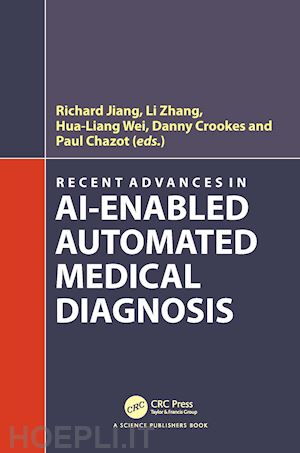Richard Jiang is a Senior Lecturer (Associate Professor) in the School of Computing & Communications at Lancaster University, UK. He holds a Leverhulme Trust Research Fellowship. He is a Fellow of HEA, an Associate Member of EPSRC College, and an EPSRC RISE Connector. Dr Jiang's principal research interests are in Artificial Intelligence, XAI, Biometrics, Privacy & Security, Intelligent Systems, and Biomedical Image Analysis. His recent research has been supported by grants from EPSRC (EP/P009727/1), Leverhulme Trust (RF-2019-492), Qatar National Research Fund (NPRP No.8–140-2–065) and other industry/international funders. He has supervised and co-supervised several PhD students. He authored over 80 publications and was the lead editor of three books published by Springer. He served as a TPC/Editorial member and a reviewer for various international conferences and journals. Li Zhang is a Reader in Department of Computer Science, Royal Holloway, University of London, UK. She received a PhD degree from the University of Birmingham, UK. She has expertise in machine learning, deep learning, computer vision, and intelligent robotics. Dr Zhang’s recent research has been funded by Innovate UK (2017-2019, 2018-2020, 2020-2021), Research England (2020-2021), and European Commission (2012-2016, 2014-2018, 2018-2021, 2019-2022). She is the lead Guest Editor for Complexity, Springer Multimedia Tools and Applications and Elsevier Pattern Recognition Letters. She has supervised and co-supervised several PhD students. Dr Zhang is a Senior Member of IEEE. Hua-Liang Wei is a Senior Lecturer (Associate Professor) with the Department of Automatic Control and Systems Engineering (ACSE), the University of Sheffield, Sheffield, UK. He is head of the Digital Medicine & Computational Neuroscience (DMCN), head of the laboratory of Dynamic Modelling, Data Mining and Decision Making (3DM), and a key member of the Insigneo Institute for in silico medicine and the Neuroscience Institute of the University of Sheffield. He has been awarded grants (as PI and Co-I) from EPSRC, NERC, Norwegian Research Council, EU H2020, Ryder Briggs Charity, and the Royal Society. He received the Ph.D. degree in the Department of Automatic Control and Systems Engineering, the University of Sheffield, UK, in 2004. He has published more than 120 papers (Google Scholar H index 34 and almost 3800 citations) since the completion of the PhD in 2004. Dr Wei’s research interests include nonlinear system identification, machine learning, neural networks, interpretable machine learning, deep learning, computational intelligence, AI and its applications, data-driven modelling, data mining, pattern recognition, data based and data informed predictive modelling, with applications in medical research and AI-assisted diagnosis among other areas. Danny Crookes is an Emeritus Professor at Queen’s University Belfast (QUB), where was earlier the Head of the computer science department from 1993 to 2002 and was also appointed to the Chair of the Computer Engineering. He was also the Director of the Research for Speech, Image, and Vision Systems at the Institute for Electronics, Communications, and Information Technology (ECIT), QUB before he retired, in 2017. He is currently an Emeritus Professor in computer science with QUB. He has published more than 200 scientific articles in journals and international conferences, and has presented tutorials on parallel image processing at several international conferences. His current research interests include the use of novel architectures (especially GPUs) for high-performance image processing. Professor Crookes has applied expertise in language design, optimizing compilers and software generators, plus software tools for hardware description, and architecture generation, to the goal of developing high level software tools to enable rapid development of real-time video processing systems. He has been currently involved in projects in automatic shoeprint recognition (ESPRC), speech separation and enhancement (EPSRC), and processing of 4D confocal microscopy imagery (sponsored by INI and Andor Technologies). Paul Chazot is an Associate Professor of Neuropharmacology in Biosciences, Durham University. He is leading a research group focusing on the identification, characterisation and validation of novel drug targets for the treatment of the major acute and chronic CNS pathologies. He also dedicates to developing novel all-in-one behavioural tests for both animals and humans. Dr Chazot has developed two new clinical development programmes over the last 20 years, one for chronic pain (Votucalis), and one for Alzheimer’s Disease (PBM-T 1068nm), the former at the pipeline stage for the company Akari Therapeutics UK, and the latter reaching the FDA Phase 2b clinical stage in the US. He is also the Durham lead for the Durham University spin-out company Nevrargenics, who has developed exciting new rational drug leads (RAR-M) for dis











